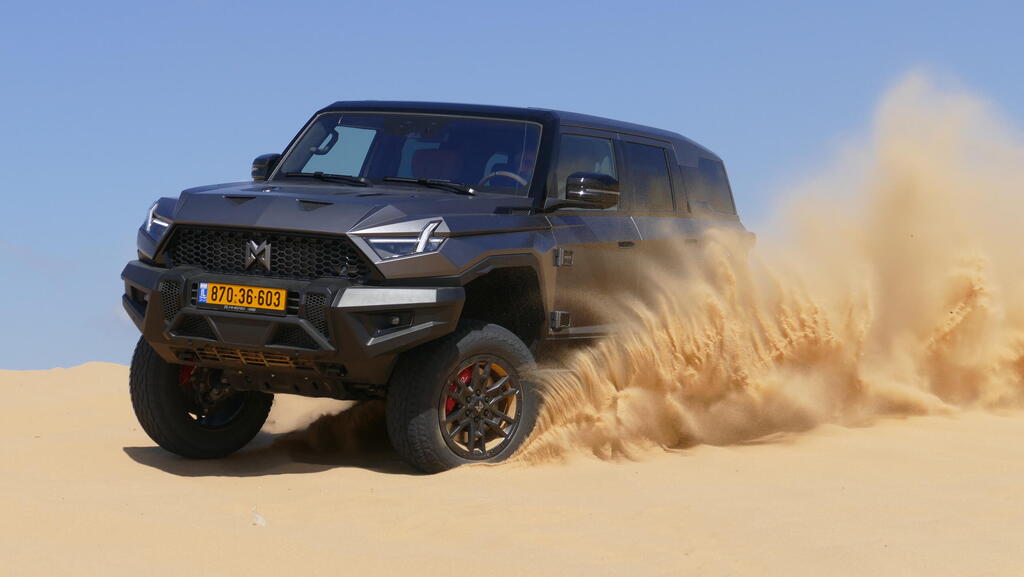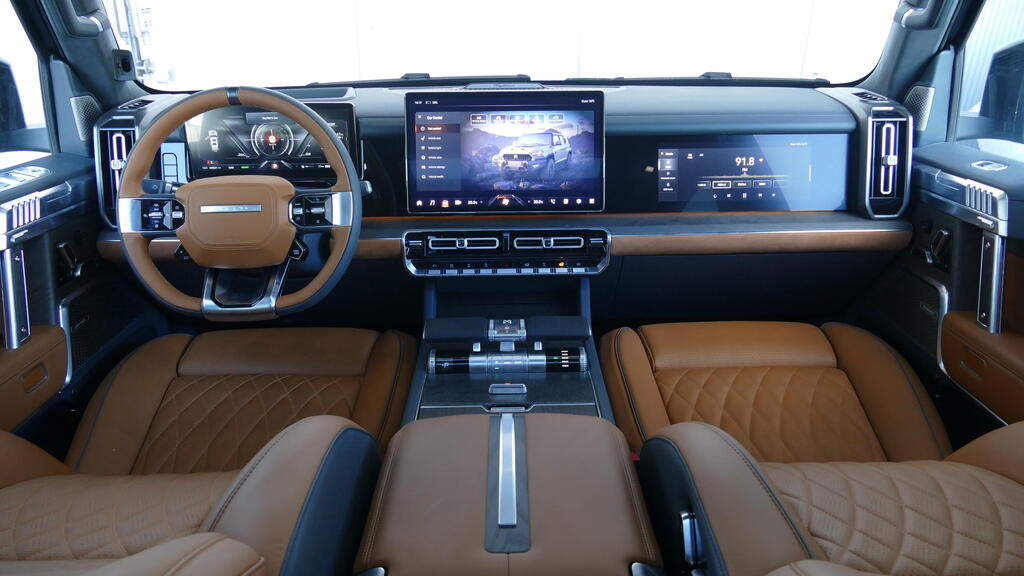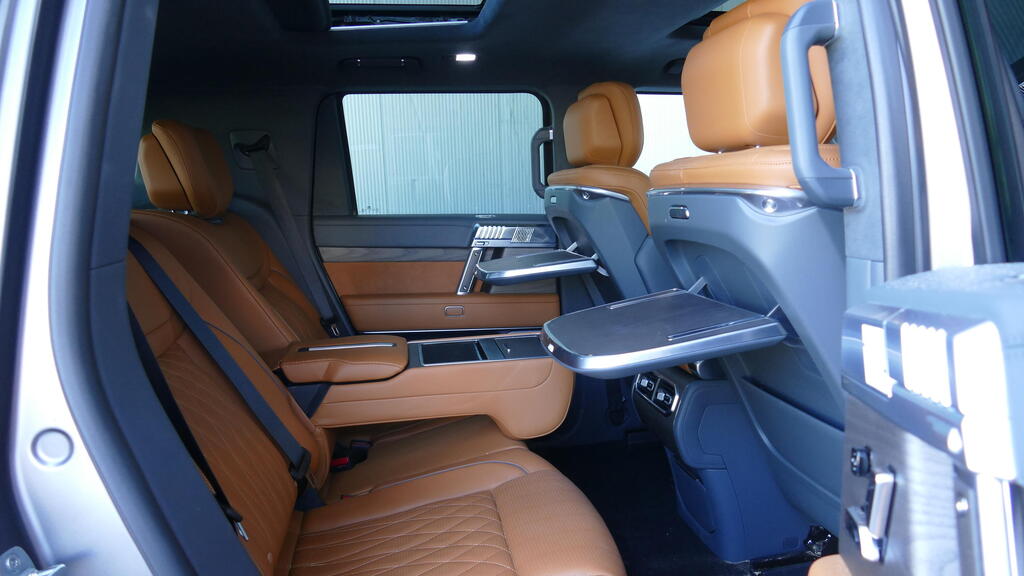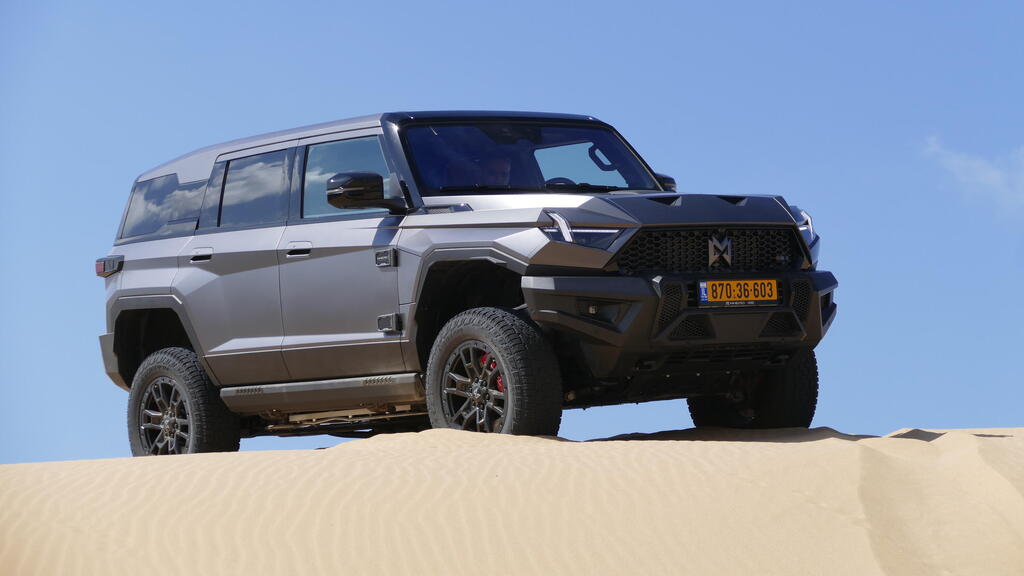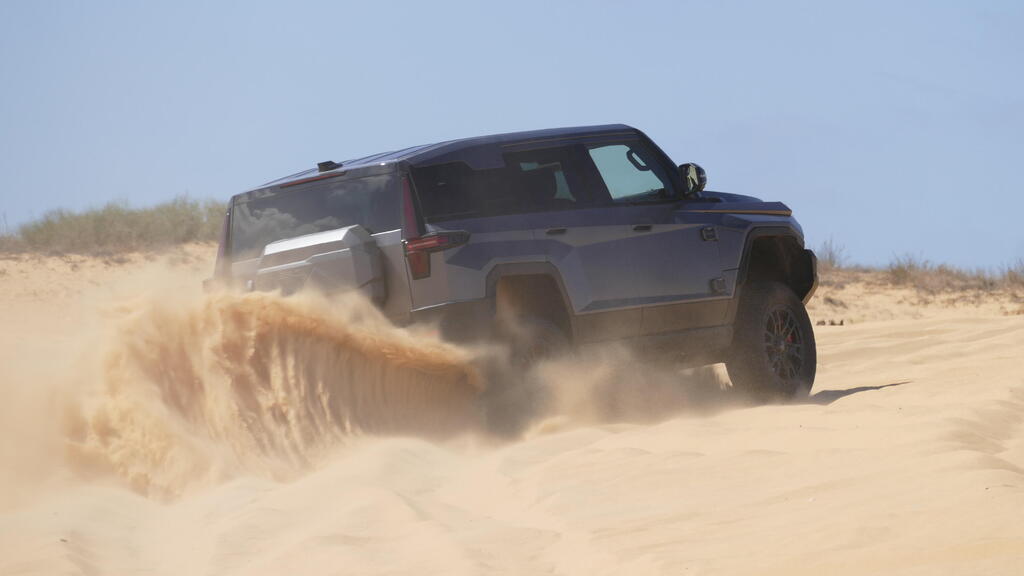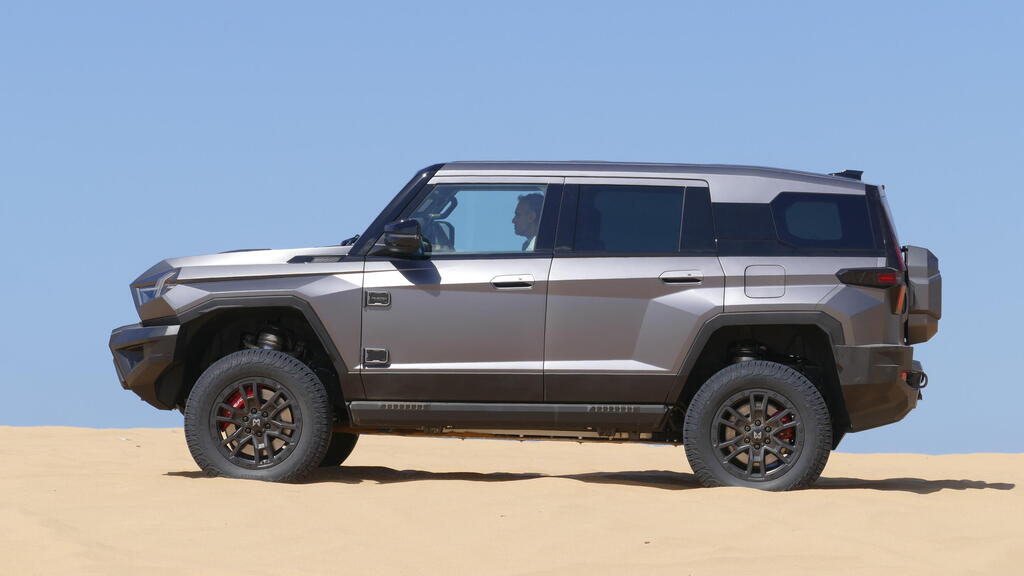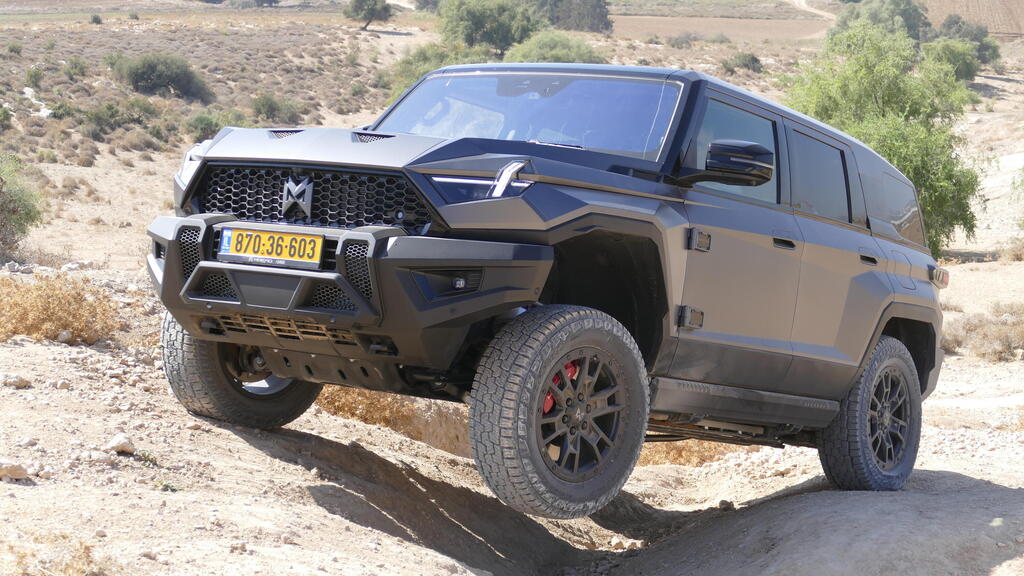Getting your Trinity Audio player ready...
Chinese automaker Dongfeng may be relatively unknown outside of China, but domestically it’s one of the “Big Four” and among the industry’s oldest players, founded 55 years ago. Unlike many of its competitors that focus primarily on private vehicles, Dongfeng has a storied history in military vehicles, manufacturing rugged SUVs for the Chinese military under the Mengshi (“Warrior”) brand. It all began with the EQ2050, a locally produced version of the Hummer H1, and has since evolved into a range of unique, self-developed models for military use.
Similar to GM’s civilian adaptation of the Hummer, the Chinese automaker decided to launch its own version for civilians: the M-Hero 917. This bold debut stands as China’s answer to America’s GMC Hummer EV. Just before its arrival in the local showroom, and even before an official price or launch date, we had the chance to take it for a test drive.
One look confirms it: this is a tough, combat-ready machine. It has the rugged appearance of a true off-roader, worlds away from the glitzy designs often associated with Chinese brands. The stealthy gray paint of our test model turned heads wherever it went—vehicles like this are a rarity on the road.
Inside, the cabin impresses with a surprisingly high-quality finish, combining handsome two-tone leather (black and brown) with metal and wood accents, along with a suite of digital displays. A 12.3-inch digital instrument panel provides detailed information (vehicle angle, suspension height, power distribution, G-force, and more) and even includes thermal night vision. A large 15.6-inch touchscreen in the center and another 12.3-inch display for the front passenger complete the setup, all of which are relatively easy to use.
Between the seats, there’s a large lever designed like an airplane throttle for drive mode selection (forward, reverse, park), suspension height, and off-road driving modes (snow, mud, sand, rocks, water, or auto). Similar to VW’s electric cars, the throttle and brake pedals feature small, unnecessary labels that are unlikely to be noticed.
That said, there are some “quirky” touches. The door handles are shaped like guns, and each door closure sounds like a bullet being loaded. The high driving position lets you look down on Range Rover drivers at a stoplight. The seat is reasonably comfortable, though it lacks sufficient support.
The dimensions resemble the Hummer SUV, measuring over five meters bumper-to-bumper. This provides generous rear space, complete with convenient features like a retractable tray on the backs of the front seats and an 8-inch touchscreen in the rear armrest to control comfort and entertainment settings. Equipment is extensive, with power adjustments, massage, heating and ventilation for the front and rear seats, surround cameras, two sunroofs and electrically deployable steps for easier entry into the high cabin.
The rear hatch opens sideways, with an external storage compartment for a rescue kit and coffee-making accessories or a full-size spare tire mount. It also has a 220V power outlet, though unlike some competitors there’s no front trunk. Safety features include automatic emergency braking, lane keeping, adaptive cruise control, and blind-spot detection.
Power comes from four electric motors with a combined output of 1,088 horsepower—88 more than the highest-output version of the Hummer EV pickup. Unlike similar setups found in models like the Mercedes EQG or Rivian R1T, where each motor is directly connected to a wheel, this uses a heavy transmission with a differential, which limits torque vectoring capabilities. Despite its massive 3.3-ton weight, it delivers impressive performance, reaching 0-100 km/h in 4.2 seconds. Full throttle pushes you back in your seat, and there’s a constant sense of power. However, in the ego match between the U.S. and China, this stat is still a second slower than the top Hummer EV trim.
Surprisingly, the drivetrain is virtually silent, unless you activate a sound effect through the Dynaudio 16-speaker system, with options mimicking a roaring lion or tiger. Three regenerative braking modes are available, though they can only be adjusted via the screen rather than using paddles, and even the strongest mode doesn’t allow for true one-pedal driving.
A massive 142.7-kWh battery promises a range of 450 kilometers, though its power consumption is notably high, especially when off-roading. Our leisurely drive yielded around 350 kilometers with an average consumption of 40.3 kWh per 100 kilometers. Tackling a dune or two will likely drop this figure further.
Charging speeds lag behind U.S. rivals, with a fast-charging capacity of 100 kW that takes the battery from 30% to 80% in 47 minutes. A V2L option allows for powering external devices as well.
The 917 sits on Dongfeng’s dedicated ladder frame for electric off-road vehicles, known as MORA (M-hero Off Road Architecture), with a battery integrated into the frame’s structure and protected by custom plates. Independent suspension with double wishbones and adaptive air springs provides variable ground clearance from 4.5 cm below normal height to 10.5 cm above.
Ride comfort is decent, with impressive handling of urban bumps and even potholes and ruts at higher speeds on rough trails. Wind noise is noticeable at cruising speeds, a trade-off of the angular design, but road noise is well insulated thanks to high-quality Pirelli Scorpion AT tires.
The handling feels somewhat clumsy, as expected for a vehicle of this size and weight, though Brembo brakes offer strong stopping power. Like the Hummer, it has rear-wheel steering (10.6 degrees) that allows a small turning circle of just 10.2 meters. However, the steering has a lengthy 3.5 turns lock-to-lock, requiring frequent handwork. And, like its American competitor, it also has a “crab mode” (where front and rear wheels align for diagonal movement), a useful feature for certain off-road situations.
With such immense power, it breezes over the Ashdod Dunes as if they were speed bumps, with no need to reduce tire pressure. However, the drivetrain computer’s front-rear torque distribution calibration could benefit from some fine-tuning.
Off-road capabilities are even more impressive, with adaptive suspension providing up to 33.5 cm of ground clearance and excellent approach and departure angles (37.5/36.8 degrees) due to the carefully designed bumpers, which include dual recovery hooks.
Traction control efficiently curbs any loss of grip, making it largely unnecessary to lock the front and rear differentials.
In summary, the M-Hero 917 represents a striking display of power from the East. After proving its capabilities in core markets, China now excels in combining electric power with off-road prowess – a feat few manufacturers have mastered. With top-tier mechanical components, advanced electric systems, high capability on and off-road, and an impressive luxury cabin, it’s a strong statement from Dongfeng.
Criticisms mainly focus on some imperfectly tuned systems, likely fixable through software updates. And, of course, the price is far from “budget-friendly” and comparable to GMC’s Hummer in parallel imports. Still, unlike the American model, which requires a C1 license, this one can be driven with a standard B license (for those licensed before 2007).
Dongfeng isn’t aiming to make this a high-volume bestseller. But as a flagship that showcases the young brand’s capabilities in our market, it does an excellent job – no less.
Get the Ynetnews app on your smartphone:


